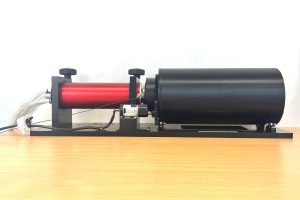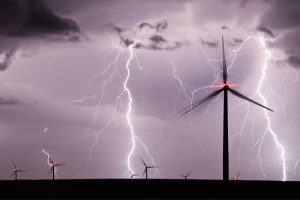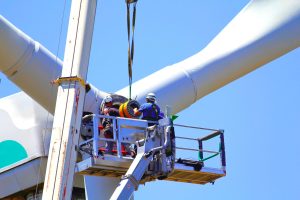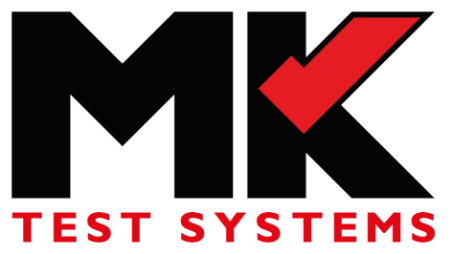Wind turbine electrical testing applications

This article provides an overview of the global wind turbine industry. It then discusses the various applications where wind turbine manufacturers and operators can benefit from the use of automatic electrical testing equipment.
Market overview of the wind turbine sector
The global wind turbine market was valued at >$50bn in 2017, and is expected to reach >$80bn by 2024 (1). The value of the UK’s wind turbine market was $1.7bn in 2017 (2).
The reasons for this growth aren’t all related to the environmental benefits. They also include:
- The declining cost of wind power generation
- Advances in technology
- Declining prices of turbine components
- Supportive government regulations
- Stakeholder incentives
- Increasing demand for electricity
Wind turbines are typically located onshore; global share is expected to reach 83% in 2022 (2). The EMEA region has instead principally adopted offshore deployment, with the UK being the largest market. This is largely driven by opposition to onshore locations from local communities and a lapse in onshore wind subsidies (2).
Wind turbine electrical testing applications
There are three main applications for automatic, electrical testing for the wind turbine sector. These are relevant for manufacturers as well as operators.
1. Slip ring testing

Slip rings are devices which enable electric current and data signals to be transmitted across rotating elements where fixed wires can’t be used. Wind turbines are an obvious use for slip rings, along with satellites, turreted vehicles, MRI scanners and many more varied applications.
Due to the unique nature of slip ring construction, it’s not as straight-forward to test these compared to other wired electrical elements. The contact between the rotating elements, stator and rotator, creates what’s known as resistive noise, which distorts signal transmission and affects test measurement – and therefore test accuracy.
Whilst MK Test Systems have a slip ring testing solution which is used by some of the largest slip ring manufacturers, producers have often developed their own system; there are no sector-wide testing standards or specifications.
This type of test is usually carried out by slip ring manufacturers, as slip rings aren’t commonly tested again during fitting.
2. Bond testing

Lightning damage is the single largest cause of unplanned downtime in wind turbines, and that downtime is responsible for the loss of countless megawatts of power generation. Due to the height of the structures, and being inherently located in exposed areas, wind turbines are exposed to lightning strikes as often as 10 times a year (3).
Wind turbines are built with various methods of lightning strike protection, and commonly create a safe conductive path for lightning current to travel from the blades down to the ground without causing damage.
MK Test Systems’ range of bond and loop resistance testers are able to check that turbines and structures have been built correctly and that there aren’t any areas of poor bonding or miss-wires which may result in lightning damage.
This testing again typically takes place during manufacture.
3. Preventative maintenance

Whilst both slipring testing and bond testing are useful during the manufacture of wind turbines, it is in the area of preventive maintenance that wind farm owners will see the real benefit.
When a wind turbine breaks down, the loss of profit is vast. Vestas, the world’s largest wind turbine manufacturer, reported warranty payouts of €175m just for a single quarter in 2020.(4)
Annual bonding checks can ensure the lightning protection systems are still working correctly, saving hundreds of thousands of pounds in preventable downtime for each turbine.
Operators could be also utilising the big data available with these modern, digital bond testing tools. Identifying patterns in length of time between damage, locations of damage and so on will enable operators to predict and plan maintenance in advance – saving money due to downtime and maintenance engineer time.
References
Gupta, A. and Singh Bais, A., 2018. Wind Turbine Market Report. Available at: https://www.gminsights.com/industry-analysis/wind-turbine-market (Accessed 7 October 2021).
Power Technology, 2017. Global wind turbine market set to reach $47.83bn in 2022. Available at: https://www.power-technology.com/comment/global-wind-turbine-market-set-reach-47-83bn-2022 (Accessed 7 October 2021).
Dib, D., Ghoudelbourk S. and Mordjaoui, M., 2015. Protection of Wind Turbines Against Lightning Damage. Available at: https://www.researchgate.net/publication/277326296_Protection_of_wind_turbine_against_the_lightning_damage (Accessed 7 October 2021).
Power Technology, 2021. When lightning strikes: managing impacts on wind turbines. Available at: https://www.power-technology.com/features/when-lightning-strikes-managing-impacts-on-wind-turbines (Accessed 19 October 2021).
Next steps
You can save this article in downloadable PDF format here for later reading. Visit our Power & Control page for more information about our testing solutions in this sector.
